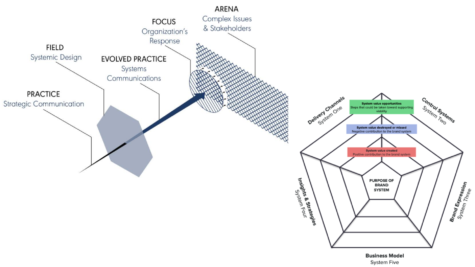Two Major Research Projects (MRPs) — they might be called master’s theses elsewhere — by Zaid Khan and David Akermanis reflect the Systemic Design agenda within the OCADU program on Strategic Foresight and Innovation (SFI). To graduate, all SFI students complete an MRP. With many subjects and techniques covered during SFI studies, only a few exercise Systemic Design at their core.
The September session of Systems Thinking Ontario came shortly after the defence of the two MRPs in August. As we had suspended convening in person during 2020, our monthly meeting was conducted online. This afforded recordings to be shared more widely.
The video file is also available on the Internet Archive, for those who prefer a downloadable option.
| Video | H.264 MP4 |
| September 14 (1h27m) |
[20200914_ST-ON_Khan_Akermanis.mp4] (FHD 785kbps 293MB) [on archive.org] |
The digital audio originally in M4A format has also been transcoded to MP3.
| Audio | |
| September 14 (1h27m) |
[20200914_ST-ON_Khan_Akermanis.m4a] (43MB) 20200914_ST-ON_Khan_Akermanis.mp3] (38MB) |
Here is the original description for the Systems Thinking Ontario September 14, 2020, session.
— begin paste —
Strategic Communications + The Brand Stack
A Major Research Project at OCADU is roughly equivalent to a Master’s Degree thesis (with some administrative differences). To start off the new academic year, we will have fresh presentations following the successful defences in the Strategic Foresight & Innovation Program at OCADU over the last month, by Zaid Khan and David Akermanis.
(1) A Systems-Oriented Approach to Strategic Communications — Zaid Khan
Systemic Design has emerged as both a theory and a practice that integrates design thinking and systems thinking to help designers cope with complex social systems.
In this Major Research Project, Zaid explores how strategic communications – the planned process of delivering a relevant message to a specific audience to achieve an objective – can be adapted to help organizations better respond to complex issues (wicked problems) and the variety contained within higher-order systems.
The MRP looks at this topic through a case study involving Canadian news media. The issues facing journalism and Canadian news media are complex in nature; multiple stakeholders, different organizations and industries, competing value systems, objectives, perspectives, and interests. This makes it an ideal case to examine the effects that a more systems-oriented approach to communications may have when responding to complexity.
The paper identifies the first set of learnings on: how the principles of Systemic Design can inform the development of “systems-oriented communications”, its potential value for value organizations, and future areas of research.
Biography:
- With one foot coming out of the creative advertising world, and the other stepping into systemic design and systems changes, Zaid is exploring the ways people respond to complex issues.
(2) The Brand Stack: Using systems to diagnose and address barriers to organizational alignment and brand identity — David Akermanis
Most business leaders understand that brands are a reflection of cross-functional activity that spans well beyond the traditional scope of the marketing department. But, most don’t approach cross-functional management of their brands with a great deal of formality or intent. It often happens informally, or organically. Few seem to think about designing processes and structure to specifically promote brand outcomes.
In this Major Research Project, David explores how organizations might better diagnose and address systemic misalignments that prevent them from achieving brand-related outcomes. Its aim is to explore whether a “brand system” can serve a cybernetic role. One that helps management more deliberately pursue the integrative effects associated with brand orientation and the consideration of brand as a central managerial pursuit.
By employing a research through design (RtD) approach, the paper proposes that the “brand stack” might be an effective scaffold which can be used to better understand the artefacts, processes and structures that promote brand values across organizations. The brand stack conceptualizes the brand as a type of control system for the organization; one which can be deliberately designed to promote system viability.
Biography:
- David has spent the last decade working in advertising, consulting and public relations, helping organizations build their brands, sharpen their strategies, and focus their marketing operations. His unique blend of experience allows him to not only help clients to carve out unique market positions and develop powerful brand expressions, but also to look inside the organisation to help design processes, roles and tools to help ensure brand success.
References
From the OCAD University Open Research Repository
- Khan, Zaid (2020) Responding to Complexity with Humility: A Systems-oriented Approach to Strategic Communication. [MRP] at http://openresearch.ocadu.ca/id/eprint/3115/
- Akermanis, David (2020) The Brand Stack: Using brand systems to diagnose and address systemic barriers to organizational alignment and brand identity. [MRP] at http://openresearch.ocadu.ca/id/eprint/3114/
— end paste —



